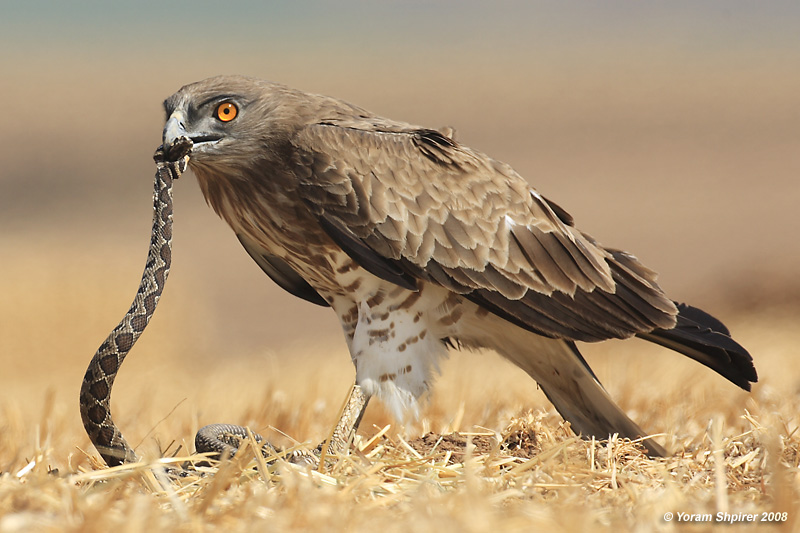Short–toed snake eagle: Red Data Book of Armenia

Hawks and eagles — Accipitridae
Status. A rare species of decreasing population and patchy range. Listed in the Red Data Book of the former USSR. Listed in the IUCN Red List of Threatened Species (ver. 3.1) as Least Concern. According to IUCN criteria categorized as Vulnerable VU D1.
Distribution. The main part of the range is concentrated in North Africa, Europe, Caucasus, Asia Minor, Western Siberia.
Distribution in Armenia. Occurs everywhere, except the western treeless areas.
Habitats. Nestles in woodland areas (mixed and juniper sparse forests. Hunts predominantly in open spaces.
Biological traits. One egg is laid once a year.
Population size and its trends. In the past, there were 10–30 breeding pairs in Armenia. Four individuals are kept at the EARAZA zoos.
Major threats. Uncontrolled poaching of reptiles, encroachment of nesting sites, deforestation, use of toxic chemicals in agriculture, and direct poaching. Disturbance by wild plant gatherers and tourists inflicts a serious stress on snake eagles. Removal of eagle nestlings and eggs from aeries is on rise.
Conservation measures. Protected in Khosrov Forest Reserve, Shikahogh Reserve and Dilijan National Park. Listed in Appendix II of the CITES and in Appendix II of the Berne Convention. The known and potentially suitable nesting sites should be protected as sanctuaries or temporary safety zones around the occupied nests. Local awareness–raising against reptile poaching. It is also important to strengthen control over the use of toxic chemicals in agriculture and forest ecosystems and to increase the rates of fines for nestling and egg removal.
Suggestions
 The Ministry of Environment sent a letter international partners to draw their attention to the real danger of environmental disasters as a result of Azerbaijan's large-scale aggression towards the territory of Armenia
The Ministry of Environment sent a letter international partners to draw their attention to the real danger of environmental disasters as a result of Azerbaijan's large-scale aggression towards the territory of Armenia
 Vicia pisiformis: Red Data Book of Armenia
Vicia pisiformis: Red Data Book of Armenia
 Vavilovia formosa: Red Data Book of Armenia
Vavilovia formosa: Red Data Book of Armenia
 Trigonella capitata: Red Data Book of Armenia
Trigonella capitata: Red Data Book of Armenia
 Trigonella astroides: Red Data Book of Armenia
Trigonella astroides: Red Data Book of Armenia












